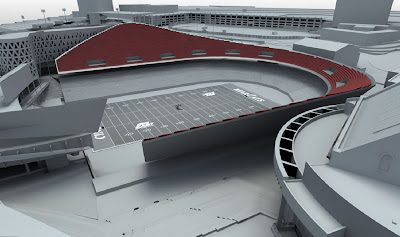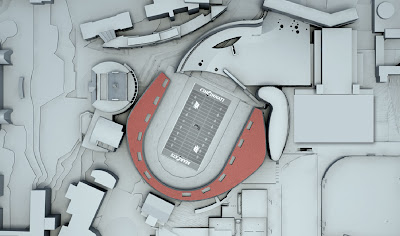With the success of the Bearcat football program combined with the already tight confines of Nippert Stadium it is only natural that talks have been in progress about expanding the stadium. The expansion would not only add more seating capacity, but take care of some other much needed improvements for concessions, restroom facilities and luxury suites.
Recently University of Cincinnati Athletic Director, Mike Thomas, described Nippert as the Wrigley Field of college football. The small and intimate setting certainly agrees with that. The surrounding buildings that are incorporated into the stadium also plays along with that theme.
Well the University had some drawings done by a Baton Rouge architecture firm a little while ago and have been sitting on those drawings ever since. There have recently been rumors flying about that Coach Brian Kelly has met with UC officials about these plans. What are your thoughts? Too soon, not enough, awesome, tacky, too modern?
Personally I think it works pretty well with a few exceptions. The area behind the west concourse that is sandwiched in between the stadium and Tangeman University Center (TUC) will become a dark and damp place as a result of this. It would also block out much of the sunlight that floods TUC via the giant glass wall on that side of the building.
The other issue I have is with covering most (or all) of the CCM building that is in the south endzone. The building is one of the coolest features of the stadium and I think could be manipulated in some way to incorporate luxury suites and avoid being blocked out (get creative).













